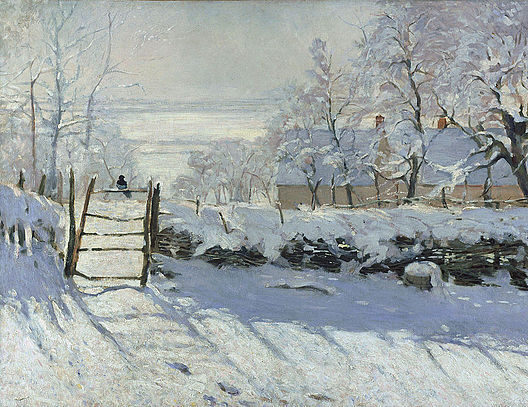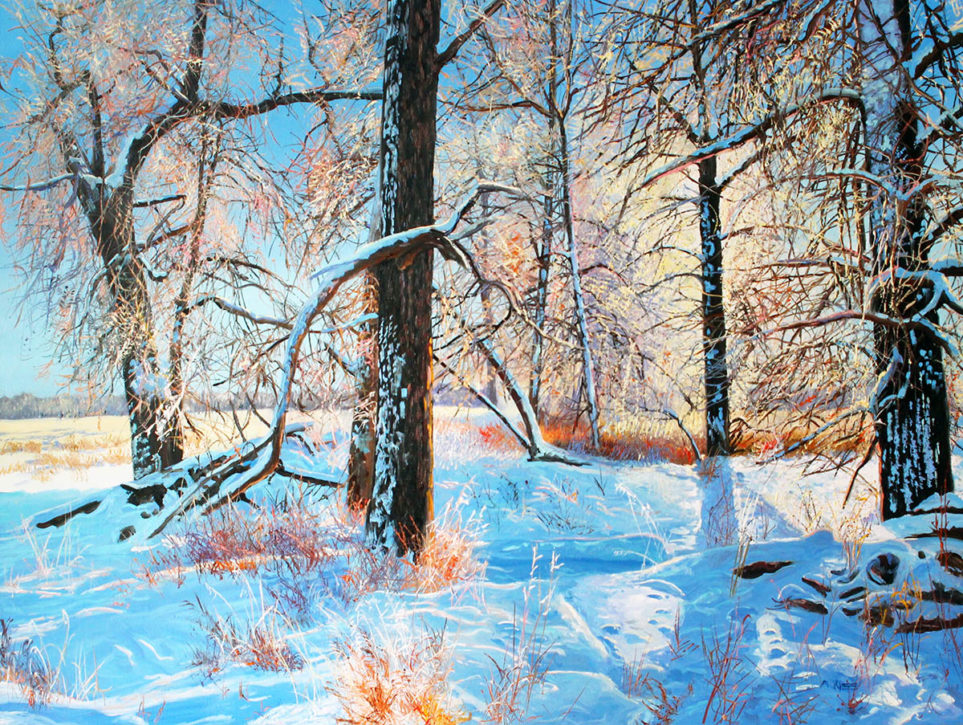As Picture This Gallery hosts The Winter Art Show, we embrace the ‘white’ season here in Alberta. There is a specific skill in actually painting snow, as it is rarely purely white, instead, it reflects the hues of the sky and the objects, or natural colors around it. It may be bluer with a bright blue sky, or greyer with overcast clouds. As you view a snow scene in art you will notice subtle hues of lavender, green, blue and grey, all of these contrasts create the image of piled snow. The actual image of snow is said to evoke dreams of vast expanses, silence, solitude, and emptiness, but also of purity because of its bright whiteness. It can also mean death and suffering due to the element being extremely cold, something all Albertans are all too aware of.
The most famous snow scene artist is Claude Monet, who was said to have moved to Argenteuil after a particularly hefty downpour one winter. In fact, he created over 140 winter paintings, with haystacks covered with snow being one of the most repeated images.

The Magpie Winter Scene by Claude Monet
He was said to have sat outside painting with frostbitten fingers. That is one a determined artist!
Of course, there are other artists, who captured snow scenes, such as Bruegel, his paintings forged a whole new genre, which was embraced by 17th-century Dutch painters at the time. His son, Pieter Bruegel the Younger, was known to have painted copies of his father’s work. There are also a significant number of works by Camille Pissarro, and Alfred Sisley with their interest in the so-called effets de neige, or effects of snow guiding their choices.
Visit Picture This Gallery (map)to view or online, the Winter Art Show

